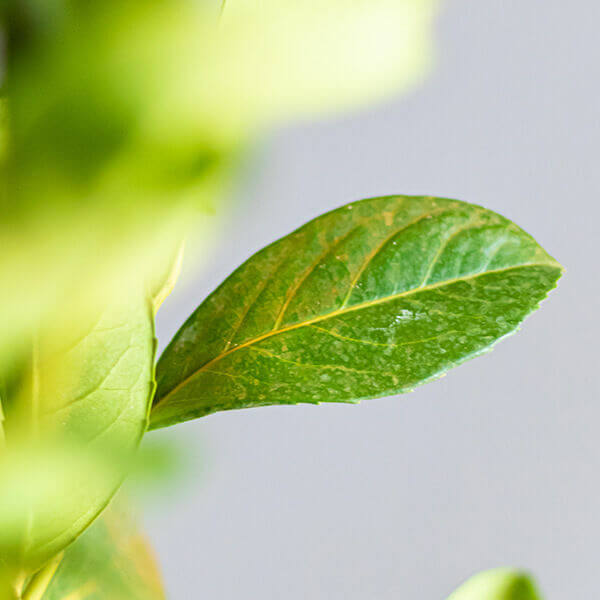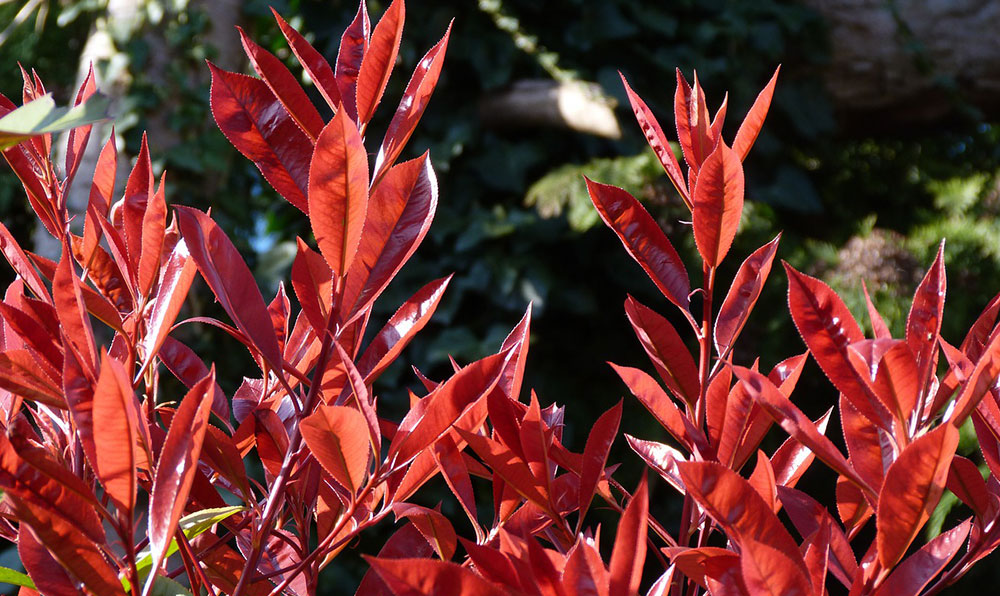Hedge Plants For Living Walls
Enhance your garden's appeal with lush hedge varieties such as Yew (Taxus), Thuja, Laurel, Photinia, and Bamboo, celebrated for their structural integrity and ecological benefits.
Yew and Thuja provide evergreen coverage and winter season resilience, while Laurel uses rapid development and broad, fragrant leaves.
Photinia includes seasonal charm with its dynamic red foliage, and Bamboo lends a low-maintenance, serene ambiance.
These hedges enhance air quality, reduce sound, and develop tranquil, private spaces.
Correct planting, spacing, and maintenance guarantee energetic development and ecological consistency.
Explore how these lush varieties can elevate your garden's appeal and wellness.
Key Takeaways
Transform Your Garden With Lush Hedge Ranges
- Select Yew for its thick, evergreen development and exceptional durability.
- Opt for Laurel for its fast growth and broad leaves, guaranteeing fast personal privacy.
- Choose Photinia for its vibrant seasonal foliage, which turns a striking dark red.
- Use Bamboo for a low-maintenance, winter-hardy hedge with aesthetic appeal.
- Area plants 2-3 per meter and prune routinely for ideal development and health.
Popular Hedge Plants
When changing a garden with lavish hedge ranges, it's important to consider popular hedge plants such as Yew, Thuja, Laurel, and Photinia due to their unique qualities and benefits.
Yew (Taxus) is highly esteemed for its durability and dense, green growth, making it a prime option for sustaining landscapes.
Thuja is kept in mind for its evergreen foliage and robust winter season strength.
Photinia includes seasonal vibrancy with red leaves that darken with time, developing vibrant visual appeal.
Laurel uses fast development and fragrant, broad leaves, ideal for quick personal privacy.
Furthermore, Bamboo is an outstanding choice for ambiance, using a low-maintenance, winter-hardy choice that enhances the garden's visual with its classy, swaying walking canes.
These choices accommodate a range of horticultural requirements and choices.
Advantages of Garden Hedges
Garden hedges use a plethora of advantages, making them a valuable addition to any landscape. These natural barriers are economical to carry out and offer considerable wind protection, enhancing air circulation and contributing to noise decrease. The thick foliage of hedges like Thuja and Beech makes sure personal privacy by obstructing visibility, developing a peaceful and secluded environment.
Hedges also play a vital function in microclimate regulation, supplying a stable environment that cultivates plant growth and decreases temperature level fluctuations. Their complex leaf structures filter contaminants, improving air quality and adding to a healthier garden environment.
Moreover, hedges master noise decrease, absorbing and deflecting acoustic waves to lower ambient sound levels. This dual performance of offering both visual and acoustic personal privacy enhances the general harmony and aesthetic appeal of any garden.
Planting and Upkeep Tips
For a successful hedge, precise preparation of the planting location is crucial. Guarantee the soil has proper pH and drain to support strong root advancement.
Space the plants properly for the picked species. Water the hedge often throughout its preliminary growth phase, changing as needed with seasonal modifications.
Execute a systematic bug control and disease avoidance technique, using natural or chemical treatments when essential. Frequently examine for aphids, termites, and fungal infections.
Apply mulch to keep wetness and reduce weeds. Seasonal pruning promotes dense growth and air flow, vital for plant health.
Following these guidelines will assist you cultivate a lively, well-maintained hedge that improves the charm of your garden.
Spacing and Cutting Standards
Spacing and Cutting Standards
Correct spacing and trimming are essential for cultivating healthy, visually appealing hedges. Sufficient spacing guarantees each plant receives adequate nutrients, light, and airflow.
Follow these guidelines for optimal hedge maintenance:
- Spacing: Position hedge plants 2-3 plants per meter to encourage robust growth.
- Pruning Techniques: Regular pruning is necessary for keeping preferred hedge height and shape. Cut brand-new growth in summertime and cut back older wood during winter season.
- Seasonal Care: Change trimming techniques and schedules according to seasonal requirements to guarantee plant health.
- Hedge Height: Routinely screen and trim to maintain the wanted hedge height and attain uniform visual appeals.
Abiding by these actions will ensure your hedge flourishes, enhancing both the appeal and functionality of your garden.
Picking the Right Hedge
Selecting the Right Hedge
Choosing the appropriate hedge includes examining elements such as mature height, foliage density, and ecological durability. Successful hedge plant choice requires understanding each types' growth characteristics and site-specific flexibility.
For example, Yew (Taxus) uses exceptional longevity and thick growth, while Thuja is notable for its winter season resilience. In addition, considering upkeep requirements is essential; fast-growing types like Laurel or Privet demand routine trimming, whereas low-maintenance alternatives like Bamboo or Ivy might be more effective for those seeking very little upkeep.
Ecological elements such as soil type, light availability, and wetness conditions should likewise guide the selection procedure. This careful technique ensures the selected hedges will grow, offering both practical and visual benefits to the garden landscape.
Delivery and Planting Suggestions
To ensure your hedge plants prosper, they need to be delivered by specialized couriers and planted without delay upon arrival.
Follow these essential actions for effective planting:
- Soil Preparation: Enrich the soil with organic matter to improve drain and nutrient material.
- Planting Depth: Create a trench twice the width and equal to the depth of the root ball.
- Watering Strategies: Water completely after planting, keeping the soil consistently damp however not filled.
- Mulching: Use a layer of mulch to maintain moisture and suppress weeds.
Client Assistance and Service
Offered the vital function of timely assistance in horticultural pursuits, our customer support team is offered six days a week through telephone, e-mail, and social networks to use skilled advice and swiftly address any concerns. Their dedication to quick response times ensures customer satisfaction by resolving queries associated with plant health, ideal planting methods, and maintenance schedules.

Within 24 hours
This thorough support group, reinforced by an outstanding 9.3/ 10 client ranking, highlights our commitment to enhancing the gardening experience for each customer.
Regularly Asked Concerns
The Length Of Time Does It Take for Hedge Plants to Establish?
Hedge read more plants typically require one to 3 years to end up being completely developed, with the specific period differing by types and growing conditions.
Efficient care throughout this vital duration is vital for robust growth. Consistent watering, vigilant weed control, and appropriate fertilizer application are pivotal in promoting strong root development.
For instance, fast-growing types like Laurel might develop quicker, while slower-growing ranges such as Yew might take longer. Diligent maintenance speeds up the facility process, resulting in healthy and thick hedges.
What Are the Finest Hedge Plants for Personal Privacy?
The question of the best hedge plants for personal privacy includes assessing evergreen and deciduous options.
Evergreen hedges like Thuja, Laurel, and Cypress provide year-round protection, making sure continuous privacy.
On the other hand, deciduous hedges such as Beech provide seasonal privacy, shedding leaves in colder months.
Secret maintenance tips for personal privacy hedges include regular cutting, fertilizing in spring, and appropriate spacing-- typically 2 to 3 plants per meter.
In addition, consistent watering and diligent weed elimination are essential for promoting healthy, thick development.
Can Hedge Plants Attract Wildlife to My Garden?
Yes, hedge plants can attract wildlife to your garden by providing vital advantages like shelter, food, and nesting websites, thus boosting local biodiversity. Yew, holly, and laurel are outstanding for attracting birds, while ivy supports a variety of pests.
However, it is necessary to keep in mind that there are some downsides, such as increased upkeep to manage pests and regular upkeep. Carefully picking and maintaining hedge ranges can help stabilize these downsides and benefits, eventually fostering a dynamic and sustainable community in your garden.
Exist Any Flowering Hedge Plants Available?
Yes, there are flowering hedge plants offered that can boost the charm of your garden.
For instance, Elaeagnus, also understood as Olive Willow, produces aromatic white flowers in the fall, adding a touch of beauty.
Photinia, another popular option, showcases lively red leaves that mature into a rich green, producing a vibrant visual impact throughout the seasons.
To ensure these plants flourish, it's important to practice correct pruning techniques and seasonal maintenance, such as trimming new development in the summer and cutting back in the winter season.
These procedures will assist keep the health and visual appeal of your flowering hedges.
How Do I Prevent Pests in My Hedge Plants?
To prevent bugs in hedge plants, use natural pest control methods and preserve correct hedge care. Present useful bugs like ladybugs, which take advantage of damaging bugs, to develop a well balanced environment.
Frequently check your hedges for indications of problem and promptly remove any affected parts to avoid the spread. Make sure the health of your hedges by using well balanced fertilizers and providing adequate water.
Utilize mulching to maintain soil wetness and appropriate spacing to minimize plant stress and promote robust growth. These practices jointly help in minimizing bug issues and keeping a healthy hedge.
Conclusion
In essence, picking the best hedge varieties such as Yew, Thuja, and Laurel can transform any garden into a serene haven. These plants supply year-round plant, enhance aesthetic appeal, and deal useful advantages like noise reduction and wind defense.
Correct planting methods, accurate spacing, constant watering, and seasonal trimming are vital for optimum growth.
Reputable delivery services and skilled client assistance make sure a seamless experience from purchase to planting, making it simpler than ever to raise your outdoor area.
Garden hedges offer a plethora of advantages, making them a valuable addition to any landscape. These natural barriers are cost-effective to implement and supply considerable wind protection, enhancing air circulation and contributing to sound reduction. The thick foliage of hedges like Thuja and Beech guarantees personal privacy by obstructing presence, creating a secluded and tranquil environment.

Pruning Strategies: Routine pruning is vital for maintaining desired hedge height and shape. Cut new growth in summer season and cut back older wood during winter.